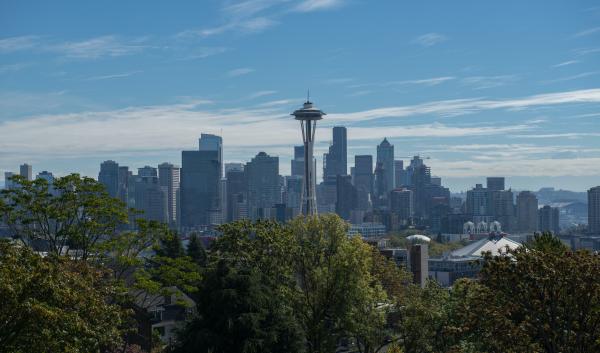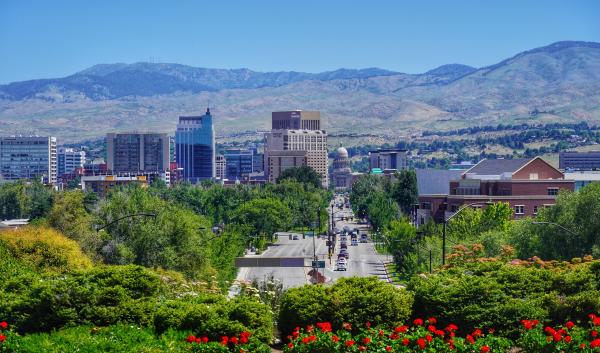Estimated reading time: 6 minutes
Key points:
-
Urban areas will experience more warming and be more vulnerable to flooding in a future with increased temperatures and larger storms.
-
Green spaces are areas covered in vegetation and are designated for recreation or conservation.
-
Green spaces have several benefits for climate change. They reduce and capture carbon emissions, slow and capture stormwater runoff by increasing water infiltration, and decrease air temperatures.
Image
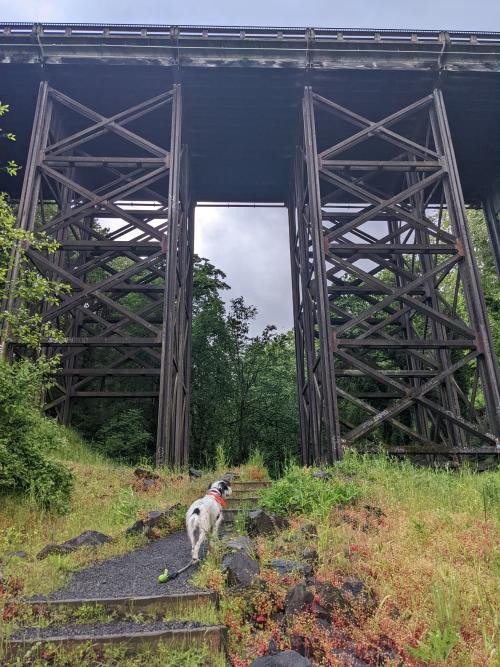
Urban areas and climate change
Both urban and rural areas feel the burden of climate change, but urban areas are affected by unique challenges. Dealing with these challenges allows the Northwest’s vibrant cities to continue thriving. Many solutions also allow cities to contribute to climate change mitigation by reducing greenhouse gas emissions and storing more carbon.
Increasing emissions
As urban areas expand, so can the greenhouse gas emissions that are associated with them. Urban and urban-adjacent populations have been growing since the 1800s. During this time, they have expanded into nearby rural, agricultural, and forested lands. These land conversions can contribute to greenhouse gas emissions, from reducing forest carbon storage to removing acres of agricultural and grazing land that can be managed to store carbon.
Recent population growth and urban sprawl in some cities have led to more carbon emissions, especially in cities that are more spread out. Compared to rural areas, cities tend to produce more air pollution overall, accounting for about 70% of all carbon dioxide emissions worldwide. However, it’s important to note that cities often produce less carbon emissions per person (depending on the density of the city).
Impacts of climate change
Cities can experience a phenomenon called the heat island effect. This is where cities are warmer than surrounding rural areas. This effect is stronger in parts of cities where buildings and streets are concentrated, and greenery is minimal. As the climate changes, heat islands could become warmer, especially with longer summers and more heat waves. It is projected that cities may experience about 1.5 times more warming than rural areas because of climate change.
Urban areas are frequently covered by asphalt, concrete, and other surfaces that prevent water from entering the soils below. This lack of permeable surfaces makes urban areas vulnerable to flooding. As precipitation patterns change in the Northwest, with more rain than snow and larger, more intense storms, urban flooding could increase.
The unequal burden of climate change effects
Within urban areas, climate change impacts are not equal. Research shows that neighborhoods with lower income or in which people of color live today tend to be hotter and more likely to flood than other neighborhoods. One study that looked at 108 US cities showed that, on average, neighborhoods in which people of color live were 5°F hotter. Another study showed that lower-income populations in Portland were more likely to experience both increased heat and increased flooding from climate change.
The increased impacts on people of color and low-income neighborhoods in cities is often a result of historical discriminatory real estate practices, such as redlining. This practice led to decreased land values in neighborhoods that housed people of color, leading to less investment in building local green spaces. As climate change affects urban areas, impacts to these populations could include more deaths and higher losses in wages for weather-exposed workers.
Green spaces – what are they?
Green spaces are areas covered in vegetation like grass, trees, or other plants and designated for recreation or conservation. Urban green spaces include:
Image
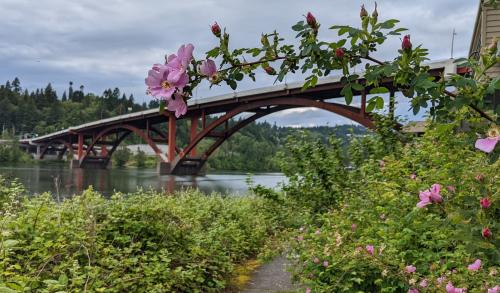
-
Urban agriculture
-
Community gardens
-
Green roofs
-
Parks
-
Urban forests
-
Rain gardens
-
Greenways or greenbelts
-
Cemeteries
These areas hold cultural and recreational importance in cities. They create habitat for plants and animals that otherwise may not exist in cities. They can also help combat challenges that climate change creates and increase equity within cities.
How can green spaces help with climate change?
Urban green spaces have both adaptation (changing behavior to deal with changes in climate) and mitigation (reducing greenhouse gases or sequestering more carbon) benefits. In cities, more trees and plants in green spaces can remove carbon when they photosynthesize. Even turfgrass can increase carbon sequestration.
Green spaces can also indirectly reduce greenhouse gas emissions by increasing how much residents ride a bike or walk. The easier it is to walk or bike in a neighborhood, the more residents walk, which may reduce their emissions by reducing the use of cars and other vehicles that burn fuel.
When cities or governments use green spaces or find ways to slow or prevent land conversion close to urban centers, it can help increase carbon storage and sequestration. Cities often create green areas surrounding cities, called greenbelts, which may include protected land. Greenbelts can slow urban sprawl, which helps reduce land conversion. By keeping trees and plants in areas surrounding cities, not only does it retain carbon in those areas, but those areas also take up some of the carbon emitted by cities.
Image
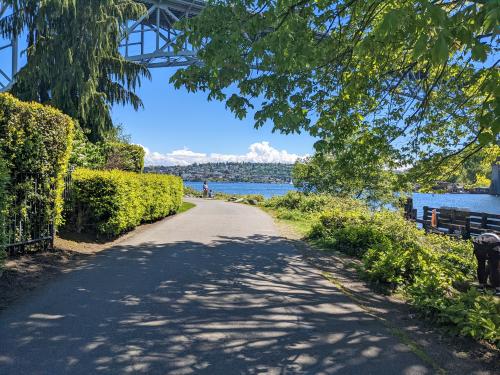
Urban green spaces may be an important aspect of climate adaptation planning for increased flood risk. More vegetation reduces both the peak and the total volume of runoff during storms. By creating more permeable surfaces throughout the city, urban green spaces capture and slow runoff, reducing flood risk.
Strategically placing parks and other green spaces in areas that will be warmer with climate change will prepare them for increased temperatures. For example, places where buildings and streets are densely concentrated and greenery is minimal can be significantly hotter than other parts of cities. Green spaces help to make these areas cooler, resulting in less energy use and emitted carbon. In temperate climates, vegetation in cities can reduce ambient temperatures as much as 4.5°F, and green roofs (roofs that are built to grow plants on them) can reduce roof temperature by 58 to 77°F in the US (roof temperature can often exceed 150°F on hot summer days).
Plants reduce heat by increasing transpiration cooling (in which plants cool the air when they “breathe out” water vapor). The cooling effect of transpiration is tangible when we compare shade types—shade from plants can be 19.8 °F cooler than other types of shade. This is because plants release water vapor that helps to reduce the air temperature (think of standing in the shade versus standing in the shade next to a mister).
Because urban green spaces provide cities with many benefits, keeping them thriving as the climate changes is crucial. As temperatures rise and precipitation changes, plants may become maladapted to the climate. This means that urban green spaces are threatened by many of the same climate change issues they help solve. In turn, the benefits they provide can be diminished. To combat this challenge, planners can design green spaces with the specific vulnerabilities of trees and plants in mind. This will ensure green spaces continue to benefit urban areas long into the future.
Cities focusing on green spaces
Although green spaces are not the only solution, they are an important tool to reduce the effects of climate change and prevent some of its causes. Some Northwest cities recognize the importance of green spaces for climate change and the continued well-being of their residents. As a result, several Northwest cities have plans to improve existing green spaces and create more. For example:
Image

-
Seattle, Washington aims to increase canopy cover, plant more trees, restore forested parklands, and improve equity and access to parks and nature.
-
Portland, Oregon is a leader in managing stormwater runoff using green infrastructure and continues to improve on past work.
-
Boise, Idaho released its “Climate Action Roadmap” in 2021. This includes plans to use green infrastructure to improve climate resilience in the city.
-
Fairbanks, Alaska is in the process of creating a more comprehensive city climate plan after a prior plan was voted down for not being aggressive enough.
If other cities emulate the examples above, some of the negative impacts of climate change can be reduced. This will make urban areas healthier and more resilient and help cities to contribute meaningfully to climate change solutions.



